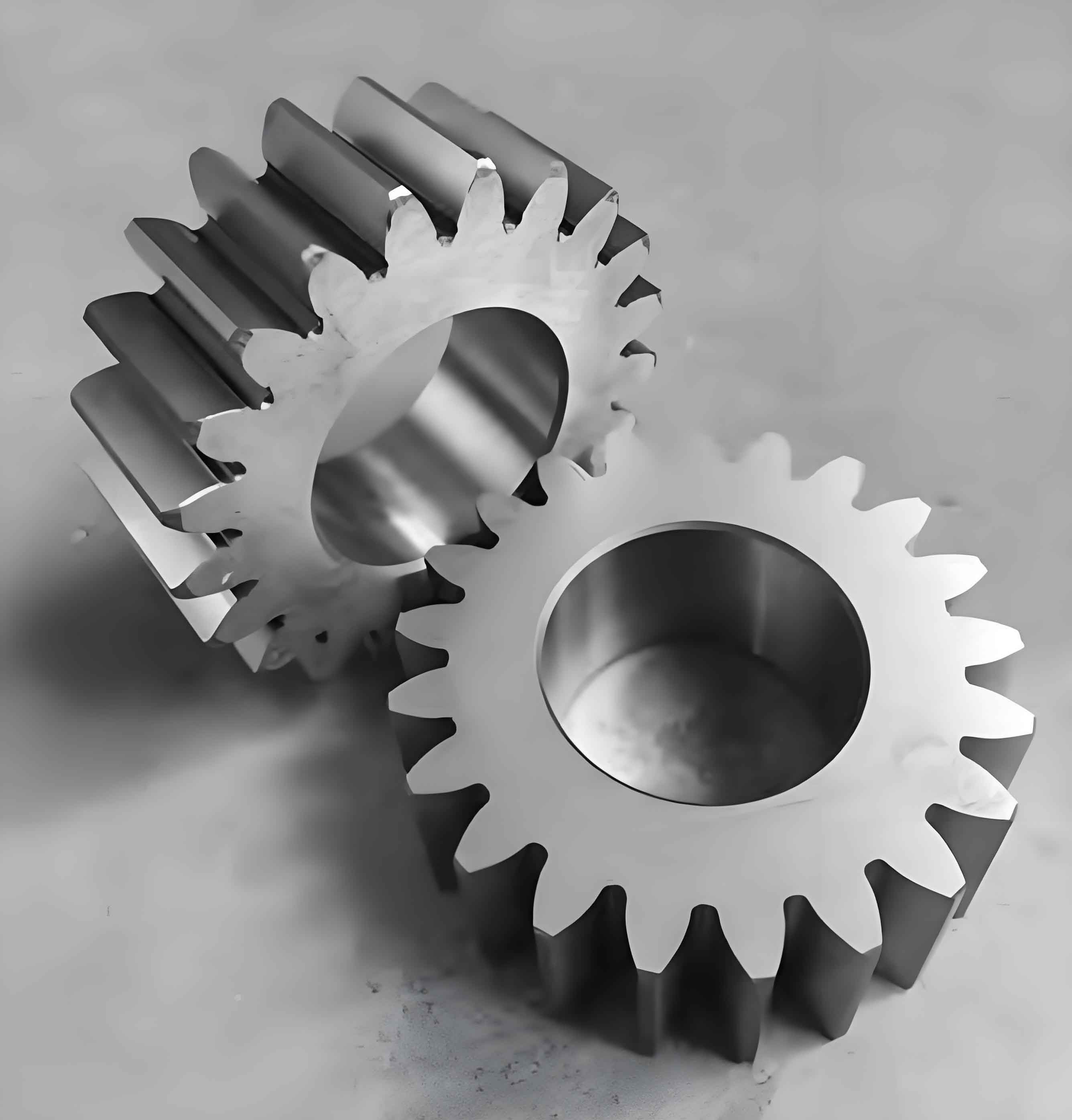Abstract
Loaded transmission error (LTE) is a crucial parameter in evaluating the dynamic meshing performance of gears. This research focuses on the LTE of internal short tooth spur gear, aiming to improve their meshing performance. Models of internal short tooth spur gear pairs were established using Romax software. The influence of tooth profile and gear helix modification parameters on the LTE fluctuation amplitude was studied, and a modification optimization method was proposed using the particle swarm algorithm. The research results provide a foundation for enhancing the meshing performance of internal short tooth spur gear.

1. Introduction
LTE is a significant indicator for assessing gear dynamic meshing performance. With the increase in gear speed, the requirement for LTE fluctuation amplitude becomes stricter. Previous research has mainly focused on external spur gear, while research on internal spur gear is limited. Therefore, this paper investigates the modification methods of internal short tooth spur gear.
2. Modeling of Internal Short Tooth Spur Gear
The gear modeling was conducted in Romax software. The parameters of the internal spur gear pair are summarized in Table 1.
Table 1. Parameters of the Internal Spur Gear Pair
| Item | Number of Teeth | Module (mm) | Pressure Angle (°) | Addendum Coefficient | Clearance Coefficient | Face Width (mm) | Input Power (kW) | Pinion Speed (r/min) |
|---|---|---|---|---|---|---|---|---|
| Pinion (Small) | 53 | 4.0 | 20 | 0.8 | 0.3 | 212 | 1000 | – |
| Gear (Large) | 160 | – | – | – | – | – | – | – |
| Rim Thickness | – | – | – | – | – | – | – | 16 mm |
3. Modification Methods for Spur Gear
3.1. Tooth Profile Modification
Tooth profile modification parameters include the modification amount and length at the tooth tip and root. For ease of manufacturing, a modification diagram along the tooth height direction is adopted.
The maximum modification amounts at the tooth tip (y1) and tooth root (y3) were varied between 0.010 mm and 0.030 mm in five increments.
3.2. Helix Modification
Two types of helix modifications, end relief and crown modification, were analyzed. The maximum helix modification amount (y5) was also varied between 0.010 mm and 0.030 mm in five increments.
4. Influence of Modification Parameters on LTE
4.1. Tooth Profile Modification
The influence of tooth profile modification parameters on LTE was analyzed with fixed helix modification parameters.
4.2. Helix Modification
The influence of helix modification parameters on LTE was analyzed with both end relief and crown modification.
5. Optimization of Modification Parameters
The Particle Swarm Optimization (PSO) algorithm was employed to optimize the modification parameters for minimum LTE fluctuation amplitude. The optimization process.
The optimization results are summarized in Table 2.
Table 2. Comparison of Modification Effects
| Name | Standard Gear | Romax Recommended Modification | Romax Optimized Modification | This Research Optimized Modification | LTE (μm) |
|---|---|---|---|---|---|
| Modification Type | None | Linear Tooth Profile, No Helix | Parabolic Tooth Profile, Crown Helix | Parabolic Tooth Profile, Crown Helix | – |
| Tooth Tip Max. Modification | – | 16.08 μm | 16.98 μm | 28.392 μm | – |
| Tooth Root Max. Modification | – | 16.08 μm | 21.76 μm | 28.91 μm | – |
| Helix Max. Modification | – | None | 10.03 μm | 13.516 μm | – |
| LTE Fluctuation Amplitude | 6.69 | 6.45 | 3.10 | 2.86 | – |
6. Conclusion
This research analyzed the influence of tooth profile and helix modification parameters on the LTE of internal short tooth spur gear using Romax software. The PSO algorithm was used to optimize the modification parameters. The following conclusions were obtained:
- The influence of tooth tip and root modification amounts on LTE fluctuation amplitude is nonlinear, and it differs between linear and parabolic modifications.
- Helix modification also affects LTE fluctuation amplitude, with crown modification outperforming end relief.
- Reasonable modification can effectively reduce LTE fluctuation amplitude.
- The proposed optimization method effectively minimizes LTE.
The research results provide a basis for the modification design of high-performance internal short tooth spur gear.
